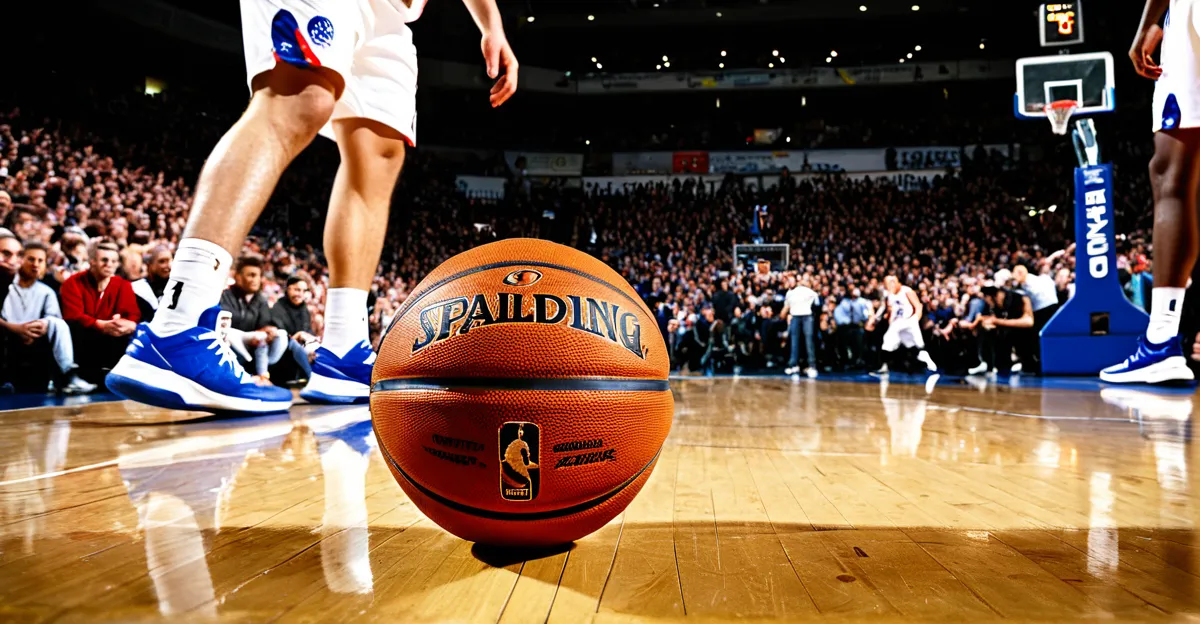Key factors driving basketball’s growing popularity in the UK
Basketball popularity in the UK has surged due to several interconnected factors. One primary driver is the significant growth of basketball participation and viewership among a diverse demographic. Recent data shows a steady rise in the number of players, with many young people embracing the sport both recreationally and competitively. This increase is closely linked to active youth engagement initiatives within schools, where basketball programs have been expanding rapidly. Schools serve as a fundamental platform, nurturing talent and fostering early interest, which sustains long-term enthusiasm for the sport.
Another crucial factor influencing sports trends in the UK is the role of media coverage. Basketball benefits from enhanced digital exposure, including live streaming and social media content, which makes the sport more accessible and engaging. Fans can easily follow games, highlights, and player stories, creating a strong community spirit and broadening the appeal. This digital presence cultivates interest beyond traditional audiences, helping to embed basketball firmly within the UK’s sporting landscape.
In the same genre : Unveiling the secret playbook: how uk basketball can achieve international glory
Additionally, the dynamic nature of basketball as a fast-paced, inclusive sport resonates well with younger generations. The combination of physical activity, teamwork, and individual skill development attracts participants and fans alike. Overall, the mixture of youth involvement, improved media strategies, and evolving sports preferences has been vital to the impressive rise in basketball popularity across the UK.
Grassroots Initiatives and Community Impact
Grassroots basketball UK plays a crucial role in nurturing talent and fostering a vibrant basketball culture across local communities. Central to this development are local basketball development programmes that prioritize youth engagement, encouraging participation from beginners to more experienced players. These initiatives often focus on expanding local clubs and youth programmes, which serve as the backbone for identifying and cultivating future athletes.
In parallel : Exploring the evolution of uk basketball infrastructure for enhanced growth support
Community events and leagues organized under grassroots basketball UK significantly boost involvement by creating accessible opportunities for regular play. The impact of these events is twofold: they enhance skill levels through consistent competition and strengthen community bonds by bringing diverse groups together around a shared passion. Such leagues often become platforms for mentorship, where older or more skilled players guide newcomers, reinforcing the sustainability of the basketball community initiatives.
In addition to local efforts, support from national organisations and charities amplifies the reach and effectiveness of grassroots basketball UK projects. Funding, training resources, and organisational expertise provided by these bodies ensure that programmes remain inclusive and able to adapt to community needs. This support mechanism is vital in maintaining the momentum of local basketball development and ensuring that valuable opportunities are available irrespective of socioeconomic background.
Together, these components—local clubs, community-driven leagues, and national support—form a comprehensive approach that delivers lasting impact on the basketball scene, ensuring grassroots basketball UK remains a thriving and accessible sport for all.
Comparison to other major UK sports
In the UK sports landscape, the contrast between basketball vs football UK is notably stark. Football dominates both participation rates and fan demographics by a wide margin. Millions of people engage with football regularly, either through playing or spectating, driven by a long-established prestige and infrastructure that has evolved over centuries. Basketball, while growing, still commands a smaller but passionate community, often attracting younger, urban audiences who appreciate its fast pace and global appeal.
Basketball vs rugby also highlights key differences. Rugby tends to have higher participation in certain regions like Wales and the southwest of England, where its traditional roots run deep. Unlike rugby’s stronghold in schools and clubs in these areas, basketball often thrives in metropolitan centers, drawing diverse demographics, including minority communities who find in basketball a culturally resonant sport with international stars.
Media attention and sponsorship further differentiate these sports. Football enjoys extensive media coverage, with numerous televised leagues and tournaments, attracting substantial sponsorship deals from global brands. Basketball, however, finds much of its support on niche channels and streaming platforms, limiting its commercial reach but fostering a close-knit fanbase. Despite this, basketball’s sponsorship opportunities are growing, often aligned with lifestyle and youth-oriented brands that capitalize on its energetic image.
Culturally, basketball benefits from an association with urban lifestyles and global pop culture, setting it apart within the UK sports scene. This unique positioning helps it carve out a distinct identity even amidst sports giants like football and rugby. Consequently, basketball is not just competing on participation numbers but also offering alternative ways for communities to engage with sport, emphasizing inclusivity and modern appeal.
Prominent teams, players, and success stories
The British Basketball League (BBL) stands as the pinnacle of professional basketball in the UK, housing some of the most competitive and successful teams. Teams like the Leicester Riders and the London Lions have consistently demonstrated dominance in recent seasons, securing league titles and showcasing high-caliber performances that have elevated the league’s profile.
UK basketball stars have started to gain international recognition through their skill and dedication. Players such as Luol Deng, who began his career in the British basketball system before making a mark in the NBA, serve as prime examples. Their journeys illustrate the growing talent pool and the increasing opportunities for British athletes to shine on the global stage.
The influence of star athletes as role models cannot be understated. Their visibility encourages youth participation and inspires aspiring players across the UK. These figures frequently engage with communities, promoting not only athletic excellence but also educational and social development, helping to nurture the next generation of UK basketball stars and strengthening the sport’s foundation domestically.
Fan perspectives and expert commentary
Basketball fan testimonials UK reveal a passionate and growing community energized by both local and international leagues. Many fans share personal stories highlighting how basketball has become a significant part of their social lives and fitness routines. For instance, several enthusiasts note that attending live games or following UK teams online fosters a strong sense of belonging and excitement. These experiences underscore basketball’s expanding appeal stories, illustrating how the sport connects diverse groups across the UK.
UK sports expert opinions consistently emphasize basketball’s upward trajectory in audience size and media coverage. Experts point to increased grassroots initiatives and improved broadcasting as key drivers of this sustained growth. They argue that basketball’s dynamic gameplay and accessibility are attracting younger demographics, which bolsters long-term engagement. This expert analysis suggests that the sport’s development in the UK is not a fleeting trend but a well-established movement gaining momentum.
Social media has played a transformative role in changing audience engagement with basketball. Fans actively share highlights, commentary, and live responses, creating vibrant digital communities. Platforms have amplified basketball appeal stories by enabling real-time interactions and personalized content. This social media synergy enhances fan testimonials UK, bridging the gap between players and supporters and fueling enthusiasm at all levels of the game. Overall, the interplay of fan voices, expert insights, and digital connectivity powerfully illustrates basketball’s evolving landscape in the UK.
Statistical insights and future outlook
Recent UK basketball statistics reveal a promising upward trajectory in the sport’s popularity. Participation rates across all age groups have increased steadily, with youth engagement showing the most significant growth. This surge reflects more inclusive programs and improved access to facilities nationwide. Moreover, data indicates that grassroots involvement and school-level basketball have experienced notable rises, contributing to the sport’s expanding base.
When examining growth projections basketball UK, analysts predict continued expansion over the next decade. These projections are based on trends in youth participation, media coverage, and investment in basketball infrastructure. The sport’s appeal is broadening beyond traditional urban centers, reaching suburban and rural areas, which supports a diversified player and fan base. Additionally, increasing television rights deals and social media engagement are projected to raise basketball’s visibility, fueling further interest.
Looking ahead at the basketball future UK, several opportunities and challenges emerge. On the opportunity front, continued governmental and private investment can enhance training facilities and coaching quality, bolstering competitive performance at both domestic and international levels. However, challenges persist, including competition with more established sports and the need for sustained funding. Addressing these challenges will be vital to maintain momentum and realize the sport’s full potential in the UK market.
In summary, UK basketball statistics combined with growth projections basketball UK suggest a future marked by rising participation and greater popularity. Stakeholders must capitalize on these trends while navigating the challenges to solidify basketball’s place in the UK’s sporting landscape.



